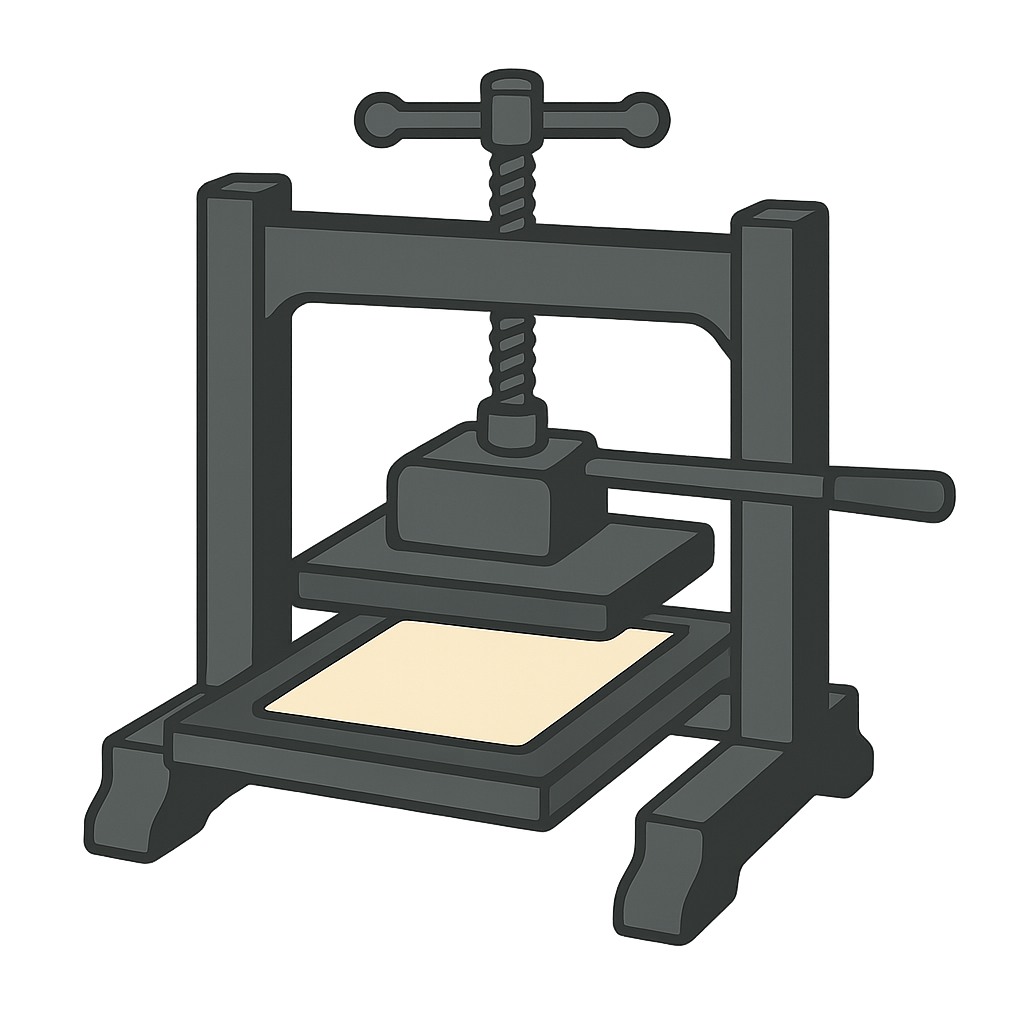Johannes Gutenberg and the Forest of Ideas
A World of Whispers and Slow Pens
Greetings. My name is Johannes Gutenberg, and I want to tell you about a time long, long ago, in the 1400s. Imagine a world without libraries full of books, without newspapers, or even signs on shop doors. In my time, books were precious treasures, as rare as jewels. Each one was created by hand, with a scribe, or a special writer, dipping a quill pen into ink and carefully copying every single letter, one by one. It could take more than a year to copy just one book. Because this took so much time, books were incredibly expensive. Only the wealthiest people, like kings and dukes, could afford them. I believed that ideas and stories were for everyone. I dreamed of a way to share knowledge not just with a few, but with thousands of people, quickly and easily. I just needed to figure out how.
Letters, Wine, and a Big Idea
My workshop was my favorite place. As a goldsmith, I spent my days melting and shaping metals, making jewelry and other fine things. I knew how to create precise shapes from metal, and this skill sparked an idea. One day, around the year 1440, I had my big 'Aha!' moment. What if, instead of carving a whole page, I created tiny metal blocks for each letter of the alphabet? 'A,' 'B,' 'C,' and so on. These letters could be moved around to spell any word, create any sentence, and form any page. Then, they could be taken apart and used all over again. The next piece of the puzzle came from watching the grape harvest. Have you ever seen a wine press? It's a giant machine that squeezes grapes to get their juice. I thought, 'What if I build a press that could push my inked metal letters onto a sheet of paper?' It sounded simple, but it was a tremendous challenge. For years, I experimented. My first metal letters were too soft and would get squished. My next ones were too brittle and would crack. I had to find the perfect mix of metals to make them strong and durable. The ink was another problem. The watery ink used by scribes would just run right off my metal letters. I needed a new kind of ink, one that was thick and oily, like a paint, that would stick to the metal and leave a sharp, clear mark on the paper. My workshop was often a mess of failed experiments, but I refused to give up on my dream.
The Great Experiment: Printing the Bible
After more than a decade of hard work, my invention was finally ready. The year was around 1455, and the air in my workshop crackled with excitement and nervousness. I decided the first major book I would print would be the most important book I knew: the Bible. My assistants and I carefully arranged thousands of tiny, shiny metal letters into a frame, spelling out the words for the very first page. We rolled the thick, black ink over them until they glistened. Then, we laid a clean sheet of paper on top. My heart hammered against my ribs. 'Will this work?' I wondered. 'After all these years, will my idea finally come to life?' I grabbed the large wooden handle of the press and pulled with all my might. The machine groaned as the heavy plate pressed the paper against the inked letters. Then, I released it. I carefully peeled the paper off the metal type. It was perfect. The letters were crisp, dark, and beautiful. We had done it. We had printed a page that was just as clear as a scribe's work, but infinitely faster. We could now make hundreds of copies in the time it used to take a scribe to make just one.
Your World of Books
I never knew then that my invention was like planting a seed that would grow into a vast forest of ideas. That single printing press was the beginning of something that would change the world forever. Every time you open a schoolbook, read a comic, or even look at words on a screen, you are enjoying the gift that began in my little workshop. My dream was that knowledge could be shared by everyone, and my invention helped make that possible. It shows that one person's curious idea, with a lot of hard work, can connect us all through the magic of shared stories and knowledge.
Reading Comprehension Questions
Click to see answer
